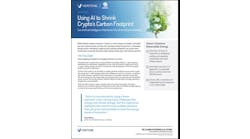Tokyo Electric Power Company proposes 1-MW island microgrid project in the Philippines
The Japanese government has proposed a 1-MW microgrid project in the Philippines. As reported by the Catanduanes Tribune, Tokyo Electric Power Company (TEPCO) — the largest power supplier in Japan — selected Catanduanes’ capital town of Virac for the solar-diesel mix microgrid project.
Catanduanes, Philippines. Photo: Wikimedia Commons.
The goal is improve the reliability of the Catanduanes power grid.
Under the proposal, funding would be sourced through a grant-in-aid program of the Japan International Cooperation Agency. The Department of Energy (DOE) and National Electrification Administration will facilitate the grant agreement between Japan and the Philippines, with TEPCO to implement the project. Catanduanes’ municipal government would provide at least one hectare (roughly 2.5 acres) of open land for solar panel installation.
TEPCO has a microgrid demonstration project on Niijima, a volcanic island in the Philippine Sea.
[clickToTweet tweet=”Japan utility proposes Philippines #microgrid” quote=”Japan utility proposes Philippines microgrid”]
***
Greensmith expands global reach
Energy storage software company Greensmith Energy is expanding its global reach. It has entered into a cooperation agreement with Finnish company Wärtsilä to provide sustainable, reliable and affordable power — particularly in countries and regions with limited or small electrical grids.
Wärtsilä has a significant installed base of multi-fuel power plants to leverage. With the addition of Greensmith’s GEMS energy storage software for control and optimization, Wärtsilä plans to deliver energy storage systems integrated with solar PV and Wärtsilä Smart Power Generation power plants, jointly forming a hybrid energy solution.
***
Share and share alike: guidance for municipalities proposing energy storage projects
Municipalities that could use some guidance with energy storage project RFIs, RFQs and RFPs have a new resource.
The Clean Energy Group and the Clean Energy States Alliance, with support from Bright Power, Sandia National Laboratories, the U.S. Department of Energy Office of Electricity, and the Barr Foundation, have drafted a series of energy storage procurement guidance documents for municipalities.
The documents were originally produced to support Massachusetts Department of Energy’s Community Clean Energy Resilience Initiative awardees in energy storage procurement, but include relevant information for other municipalities as well.
Included are specific examples of elements that should be in a solicitation for the procurement and installation of a battery energy storage projects designed to provide backup power during outages:
- A matrix of elements to include in an RFP and questions that should be asked of potential vendors.
- Templates for Request for Proposals for behind-the-meter energy storage projects and for utility-scale energy storage projects.
This document is a revised version of material previously presented in a webinar, “Procurement Guidance for Energy Storage Projects: Help with RFIs, RFQs and RFPs,” which is available here.
[clickToTweet tweet=”How to prepare #energystorage RFP.” quote=”How to prepare an energy storage RFP.”]
***
Demand response promises more competition and reliability
Demand response (DR) – a system under which customers are able to reduce their electricity usage in exchange for compensation – promises a more competitive, more reliable and more environmentally friendly electric grid, according to a new policy short from R Street Electricity.
A demand response system empowers customers to reduce their energy usage — for example, by turning down the A/C or the lights — in response to certain signals such as a spike in prices or a threat to grid reliability.
While flaws in implementation have limited the effectiveness in real-world applications, the policy short suggests that if correctly applied, demand response is a promising way to increase the efficiency of electric systems around the country.
“The greatest value of DR is in reducing the need for costly infrastructure investments. Power plants and transmission systems are capital-intensive and must be sized to meet peak demand,” writes author Devin Hartman. “Peak demand rarely is realized, so these large expenses support infrastructure that is used infrequently. DR can reduce peak demand and avoid those expenses. It also can help reduce the need for investments in back-up generation that support the integration of renewable energy sources with variable output, like wind and solar.”[clickToTweet tweet=”What you need to know about demand response.
#energyefficiency ” quote=”What you need to know about demand response. “]
Track the latest in energy storage news by following Microgrid Knowledge on twitter @MicrogridNews.







